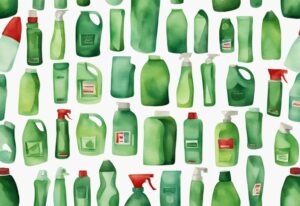Carmex vs Vaseline: In-Depth Comparison for Best Skin Care Choices
Ever found yourself standing in the lip care aisle, uncertain about which product would genuinely care for your chapped lips – Carmex or Vaseline? Trust me, I’ve been there. As we venture further into 2024, it’s time to fully understand what these two giants of lip care have to offer.
This isn’t just a brand comparison, but a deep-dive into their ingredients, healing standpoints, and long-lasting moisture effects. Each offers relief, but understanding their differences is crucial in selecting what’s truly right for your lips. So, ready to uncover which could be your new lip care favorite for 2024? Together, let’s decode the Carmex vs Vaseline debate and nurture those lips of ours.
Introduction to Carmex and Vaseline
Brief Brand Overview
Carmex and Vaseline are longstanding and trusted brands when it comes to handling chapped lips, each with its unique history and product line.
Carmex, introduced to the market in 1937, has built a reputation primarily through its extensive range of lip balms. Over the decades, the brand has extended its expertise into other skincare products, always maintaining a focus on healing and protecting lips and skin. Carmex lip balms are celebrated for their medicated formulations that offer soothing relief to chapped, irritated lips.
Vaseline, on the other hand, traces its origins back to 1859. Discovered by Robert Chesebrough, Vaseline was initially marketed as a versatile healing ointment. This product, known for its staple ingredient, petroleum jelly, soon became a household name. Vaseline has since expanded its product portfolio to include lotions, creams, and soaps, all dedicated to moisturizing and protecting the skin. The brand’s petroleum jelly is particularly cherished for its ability to create a moisture barrier, sealing in hydration.
In the context of Carmex vs Vaseline, each brand brings its strengths to the table. Carmex is synonymous with medicinal relief and healing properties, catering to those seeking immediate and effective treatment for chapped lips. Conversely, Vaseline is a versatile, preventative solution, ideal for individuals who prioritize long-term moisture retention and protection for their skin and lips. Both brands are quintessential in personal care routines, offering distinct yet complementary benefits.
Carmex vs Vaseline: A Close Look at the Ingredients
When it comes to lip care, understanding the ingredients is crucial. For a deeper dive into the best ingredients for lip care products, check out this ultimate guide to the best ingredients for lip care products.
In this section, we’ll delve into the notable ingredients of Carmex and Vaseline, highlighting how each component contributes to their effectiveness.
Notable Ingredients in Carmex
If you’re like me and often battle with dry, chapped lips, Carmex might seem like a godsend. The ingredient list itself feels like a remedy toolbox.
Petrolatum, cocoa seed butter, mineral oil, and lanolin form the moisturizing base. But what really makes Carmex stand out are its soothing agents—camphor and menthol, which bring that tingling, cooling relief to irritated skin.
Invalid YouTube video ID
I can’t tell you how many times the cooling sensation has been my saving grace in winter.
Moreover, phenol and beeswax are the unsung heroes here. Phenol aids in pain relief while beeswax does an incredible job locking in moisture and adding a protective layer. It’s like wearing a cozy, moisture-infused blanket on your lips. This potent combination makes Carmex a comprehensive go-to for both immediate relief and long-term care.
Essential Ingredients in Vaseline
Vaseline offers simplicity and reliability in one straightforward ingredient—petroleum jelly. This single-ingredient powerhouse serves as an impressive occlusive agent.
Petroleum jelly creates a nearly impenetrable barrier on your skin, reducing water loss by an astonishing 99%. It’s impressive how something so simple can be so effective. I keep a jar on my nightstand for those times when I need an uncomplicated, effective moisturizer that just works. If you prefer minimalism in your skincare routine, Vaseline is an ideal choice for preventing dryness and chapping.
It’s the perfect solution for anyone who values straightforward, no-nonsense lip care without compromising on effectiveness.
Judging the Effectiveness for Lip Care
Healing Properties: Carmex vs Vaseline
Carmex and Vaseline take unique paths when it comes to addressing chapped lips. 
Carmex, with its medicated formula, combines camphor and menthol. These components are cherished for their soothing and healing attributes. Camphor bestows a cooling sensation, easing the discomfort of severely chapped lips, while menthol offers a refreshing tingle and helps in calming irritation. This tandem makes Carmex an excellent choice for those needing prompt relief and visible healing results.
In contrast, Vaseline excels not by actively healing but by preventing further damage. Made solely of 100% petroleum jelly, Vaseline forms a protective barrier that effectively seals in moisture. This barrier halts further dehydration and shields the lips from external irritants. While Vaseline lacks specific healing agents, its occlusive nature helps retain the lips’ natural moisture, promoting gradual recovery over time.
Preventive Lip Care Measures
When it comes to preventive strategies, Carmex and Vaseline offer distinct advantages.
Carmex, armed with its medicinal ingredients, provides a temporary remedy that soothes and conceals chapped lips. On application, it masks damaged areas, giving the lips a smoother, more healed look. However, its effects are short-lived, focusing more on immediate relief rather than long-term prevention.
Vaseline, on the other hand, shines in preventive care. Its primary function is to moisturize and shield lips from drying out. By establishing a barrier that retains moisture, Vaseline prevents the lips from becoming chapped in the first place. This makes it an excellent preventive measure for regular use, particularly in harsh weather conditions that make lips susceptible to dryness. Through consistent use, Vaseline helps maintain healthy, hydrated lips, reducing the likelihood of severe chapping.
In the Carmex vs Vaseline debate for preventive lip care, the choice swings on whether immediate soothing and concealment or long-term protection and moisture retention is more desirable.
Texture and Application Experience
When it comes to choosing between Carmex and Vaseline, understanding the texture and application experience can be a game-changer. These two products offer remarkably different experiences, catering to varied preferences and needs.
User Experience with Carmex: Texture and Application
Carmex presents a unique texture and application experience that truly stands out in the lip balm market. Upon application, Carmex has a gooey consistency which some users may find quite dense. This texture is accompanied by a stinging sensation, a hallmark of its medicinal menthol content. For many, this menthol tang is not just noticeable but also significantly soothing, especially for irritated skin.
Though some describe Carmex as greasy and heavy, these qualities make it particularly favorable for overnight use. The balm creates a thick layer that remains intact throughout the night, providing prolonged relief for chapped lips. Despite its weight, the consistent layer offers a comforting, lasting effect, making it a staple in many nighttime routines.
User Experience with Vaseline: Texture and Application
Vaseline boasts a versatile and user-friendly texture that appeals to a broad audience. Its application can be adjusted to suit different needs, as the product allows for both thick and thin layers. This adaptability makes it perfect for various situations, whether you need a light touch-up or heavy-duty moisture.
The non-sticky and non-shiny texture of Vaseline is highly appealing to those who prefer a straightforward, no-fuss moisturizing solution. Its simplicity is its strength—smooth application and enduring moisturizing properties make Vaseline a popular choice for overnight use. The barrier it forms effectively locks in moisture, ensuring that lips remain hydrated over extended periods. Whether used lightly for daytime moisture or generously for nighttime care, Vaseline delivers reliable hydration and comfort.
Evaluating Cost and Availability
When exploring the differences and similarities between Carmex and Vaseline, two key factors to consider are cost and availability. Here, we delve into how they compare in terms of pricing and where you can find these popular products, so you can make an informed choice for your skincare needs.
Carmex vs Vaseline: A Price Comparison
When comparing Carmex vs Vaseline in terms of cost, it’s fascinating to note the differences in their pricing depending on the market. Carmex, costing approximately 1.59 USD, offers an economical solution for lip care with its medicated formula. I’ve found it to be a budget-friendly choice that doesn’t compromise on effectiveness.
On the other hand, Vaseline is priced at around 6 SGD, which also positions it as a cost-effective option, especially considering its versatility and longevity. Depending on the market and currency conversion, Vaseline often emerges as a budget-friendly option for those looking for a straightforward, effective moisturizing product.

Access and Retail Availability
Both Carmex and Vaseline have established strong retail presences, making them easily accessible to consumers. Carmex products are commonly found in pharmacies and specialized beauty retailers, catering especially to those seeking specific lip care and skincare solutions.
In contrast, Vaseline’s wider range of products guarantees its availability in a diverse array of retail environments. You’ll find it in supermarkets, general stores, and online platforms, making it incredibly convenient to purchase.
This broad availability means that whether you prefer to shop in-store or online, both brands offer dependable access to their popular products.
User Feedback and Reviews
Tallying User Preferences
When it comes to Carmex vs Vaseline, user preferences reveal a fascinating divide. Personally, I’ve noticed a significant leaning towards Carmex among those who value strong healing properties. With its medicated ingredients like camphor and menthol, Carmex provides an immediate, soothing sensation. For many, this cooling and slightly stinging effect is not only effective but oddly comforting, especially for severely chapped lips.
Conversely, many others, including close friends of mine, swear by Vaseline for its preventative care. The petroleum jelly works wonders as a moisture barrier, effectively sealing in hydration and shielding lips from further damage. Despite its thicker texture, Vaseline is lauded for its simplicity and effectiveness in providing long-term moisturization. Unlike Carmex, it doesn’t bring any medicinal taste or scent, making it a daily staple for many. The absence of strong flavors or scents is a boon for those sensitive to such elements.
The texture and taste play crucial roles in users’ choices between Carmex vs Vaseline. Some find Carmex’s heavy, greasy texture and strong menthol taste a bit much, while others appreciate these traits for their efficacy. In contrast, Vaseline’s neutral taste and non-sticky texture are preferred by those seeking hassle-free lip care.
Customer Reviews: Carmex and Vaseline
Reading customer reviews, it becomes clear how beloved Carmex is for its immediate comfort and healing properties. Users often highlight how quickly it heals chapped lips, thanks to ingredients like camphor and menthol. The cooling effect is especially appreciated by those experiencing severe lip irritation. Carmex’s longstanding reputation also adds to the trust and confidence users place in it.
On another note, Vaseline receives immense praise for its straightforward approach to lip care. Reviews frequently mention its effectiveness in moisturizing and protecting the lips without any unnecessary complexity. Its versatility is another big plus—whether used lightly or in thick layers for intensive overnight care, Vaseline performs beautifully. The lack of scent or taste makes it a neutral yet effective option, ideal for many. Its economic value and wide availability make it a common household staple.
Ultimately, both Carmex and Vaseline have loyal fan bases. The choice between Carmex vs Vaseline often hinges on individual needs—whether prioritizing immediate healing with a cooling sensation or seeking long-term moisture retention without a strong scent or flavor. Each product offers unique benefits, and user reviews reflect the diverse spectrum of preferences and requirements in lip care.
Are There Any Side Effects?
Sometimes, using Carmex or Vaseline might not suit everyone. Let’s delve into potential side effects for each so you can make an informed decision.
Carmex: Potential Allergic Reactions
When I first tried Carmex, I was captivated by its instant soothing sensation. It’s hard to beat when it comes to that quick relief. However, not everyone has the same experience. Some users face allergic reactions, largely due to ingredients like salicylic acid and camphor. These components are pivotal to Carmex’s effectiveness but are also known allergens for some.

If you have sensitive skin, pay close attention. You might notice signs of irritation, such as redness or itchiness. The cooling menthol, which feels so refreshing for many, can actually exacerbate these issues for those prone to allergies. To be on the safe side, always perform a patch test before extensive use.
Vaseline: Possible Side Effects
Vaseline, with its 100% petroleum jelly composition, is generally a safe bet. I remember using it countless times without any issue. Yet, when you compare Carmex vs Vaseline, a few side effects pop up, particularly regarding facial use.
Its occlusive nature can sometimes block pores, leading to clogged skin and potential breakouts, especially if you’re acne-prone. And if you’re dealing with fungal acne, Vaseline’s heavy texture might not be your ally—it can promote yeast growth.
Regularly monitor how your skin responds. Avoid using it on areas prone to such conditions to prevent irritations.
Conclusion: Carmex vs Vaseline – Which One to Choose?
When deciding between Carmex and Vaseline, your personal needs and preferences will be key, as both have their own strengths in lip care.
Carmex has a unique medicated formula, making it perfect for healing and relieving chapped lips. Ingredients like camphor and menthol provide immediate cooling and soothing effects. These components also offer therapeutic properties for treating irritation and minor pain. For those interested in the benefits of different bedding materials, understanding the differences between linen vs bamboo sheets can also improve your sleep environment. Additionally, the inclusion of phenol and beeswax enhances its ability to moisturize and provide temporary relief for severely dry lips.
On the other side, Vaseline excels as a preventive and protective layer. Made of 100% petroleum jelly, its strength lies in creating a strong moisture barrier that effectively reduces water loss from the lips. This makes it an economical and straightforward choice for keeping lips hydrated and protected over long periods. If you’re interested in learning about other cruelty-free options, you might wonder, is Crest cruelty free? Its non-sticky and less shiny texture offers a simple, versatile daily moisturizing experience without any strong scent or flavor.
Ultimately, these individual preferences regarding texture, ease of application, and the necessity for additional ingredients will guide your choice. If you need a medicinal balm for immediate lip healing, Carmex could be your go-to. Alternatively, if you want a consistent, preventive layer of moisture for everyday use, Vaseline might be more suitable.
Consider what your lips need most – an urgent medicinal fix or a steady, preventive shield – and select accordingly. Personal experiences with texture and possible sensitivities to ingredients will also steer you towards the product that best matches your unique needs.
FAQs for Clarification
In this section, I’ll address some common questions comparing Carmex and Vaseline, helping you to make an informed choice for your lip care needs.
Which is better for chapped lips, Carmex or Vaseline?
From my personal experience, Carmex tends to be more effective for healing chapped lips quickly. Its medicated ingredients, like camphor and menthol, provide soothing relief and help reduce pain more effectively.
Is it safe to use both Carmex and Vaseline?
Absolutely, you can use both Carmex and Vaseline. Just make sure you’re not allergic to any ingredients in these products. I occasionally switch between them without any issues, as long as I monitor my skin’s reaction.
Does Carmex offer any additional medicinal benefits?
Yes, Carmex goes beyond just moisturizing. The camphor and menthol in it provide a cooling sensation, which not only soothes but also helps relieve pain from severely chapped lips. It’s like getting a mini spa treatment every time you apply it.
Is Vaseline a safe choice for an everyday lip balm?
Without a doubt, Vaseline is excellent for daily use. It’s simple yet effective, as it locks in moisture and protects your lips from harsh elements. Plus, it’s free from strong scents and flavors, making it a reliable option for everyday lip care.
What are some natural alternatives to Carmex and Vaseline?
If you’re looking for natural alternatives, there are several options with ingredients like beeswax, shea butter, and coconut oil. These ingredients provide similar moisturizing benefits without the synthetic additives. Personally, I’ve found these alternatives just as effective and much kinder to my skin.
Hi, I’m Olivia Green, the voice behind nontoxicways.com. I’m passionate about helping you make the shift to a healthier, non-toxic lifestyle without feeling overwhelmed. I love sharing my personal journey, from small changes to big transformations, along with practical tips that make it all feel doable. My goal is to inspire and guide you toward a lifestyle that benefits both your well-being and the planet. Let’s take this journey together, one simple step at a time!














Post Comment